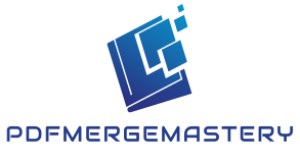PDF documents have become an integral part of everyday work. When it comes to combining PDF files, mastering the process becomes a key skill. “Mastering PDF Combination: A Comprehensive Guide” provides a comprehensive guide to improving your PDF combining skills. With this article, you will not only learn about the basics of combining PDF files, but also the leading techniques, tools, and strategies that will help you make the process as efficient and convenient as possible.
Background of PDF Combination
The Portable Document Format (PDF) has evolved into a ubiquitous and versatile file format since its inception by Adobe in the early 1990s. Originally designed to ensure consistent document formatting across different platforms, PDFs have become an integral part of digital communication and document management.
PDF Combination, the process of merging multiple PDF files into a single document, addresses the need for consolidating information and simplifying document sharing. This functionality emerged as a response to the growing complexity of digital document workflows and the desire for a seamless, unified viewing experience.
As businesses and individuals transitioned from traditional paper-based documentation to digital formats, the challenge of handling numerous individual files became apparent. PDF Combination emerged as a solution to this challenge, allowing users to amalgamate diverse documents, presentations, spreadsheets, and other file types into a single, easily shareable PDF.
Moreover, the rise of collaborative work environments and the increasing need for efficient data organization further underscored the importance of mastering PDF Combination. It serves as a pivotal tool for professionals in various fields, from project managers compiling reports to educators consolidating educational materials.
The background of PDF Combination is deeply rooted in the evolution of digital communication and the constant demand for streamlined document management solutions. As technology advances, the capabilities of PDF Combination tools continue to expand, offering users a comprehensive toolkit for manipulating and optimizing their digital document workflows.
Basics of PDF Combination
Understanding the basics of PDF Combination is essential for users who are new to the process or looking to enhance their skills. At its core, PDF Combination involves merging multiple PDF files into a single, cohesive document. The following details the foundational aspects of this process:
- Selection of Files: Begin by selecting the PDF files you wish to combine. This can be achieved through various tools, both online and offline. Users can typically choose files from their local storage or cloud-based platforms, depending on the tool being used.
- Arrangement and Order: After selecting files, arrange them in the desired order. Most PDF Combination tools provide a user-friendly interface for dragging and dropping files into the preferred sequence. The order is crucial, especially when merging documents with distinct sections or chapters.
- Tool Selection: Different tools offer various levels of functionality. Online platforms like SmallPDF or PDF Merge are suitable for quick, straightforward combinations. Desktop software, such as Adobe Acrobat Pro, provides more advanced features for users seeking greater control over the combination process.
- Initiating the Combination: Once files are selected and arranged, initiate the combination process. This may involve clicking a “Merge” or “Combine” button, depending on the chosen tool. The tool then processes the files, creating a single PDF document that incorporates all the selected content.
- Saving the Combined PDF: After the combination is complete, save the newly created PDF document. Users can choose a specific location on their device or cloud storage to store the combined file.
Understanding these fundamental steps lays the groundwork for more advanced techniques and features. Users can experiment with basic PDF Combination tools before exploring more sophisticated options to meet specific needs, such as interactive elements, security features, or file optimization. As users become proficient in the basics, they can leverage their skills to streamline document management and improve overall workflow efficiency.
Techniques for PDF Combination
Online tools provide a convenient and user-friendly approach to PDF combination. Platforms like SmallPDF, PDF Merge, and Adobe Document Cloud offer accessible interfaces.
Online Tools and Platforms:
Online tools provide a convenient and user-friendly approach to PDF combination. Platforms like SmallPDF, PDF Merge, and Adobe Document Cloud offer accessible interfaces. Users can follow these steps: Upload the PDF files to the online platform and use the platform’s interface to arrange the files in the desired order. By clicking the “Merge” or “Combine” button, users initiate the combination process, and the platform processes the files to generate a downloadable link or the combined PDF directly.
However, it’s important to note that while online tools are suitable for quick combinations, they may have limitations in terms of advanced features. Security and privacy considerations should also be taken into account, especially when handling sensitive documents.
Desktop Software
Desktop software, such as Adobe Acrobat Pro, provides a more comprehensive set of tools for PDF manipulation. To leverage desktop software, users need to open Adobe Acrobat Pro or similar software on their desktop, select the option to combine or merge PDF files, and arrange files using the software’s interface. This allows for more precise control over the order and placement of pages. Users can explore customization options, such as adding bookmarks, hyperlinks, or specifying page ranges.
After arranging and customizing, users can save the combined PDF file, considering optimization by compressing images or adjusting settings for file size. Desktop software often supports batch processing, enabling users to combine multiple sets of files in one go.
Command Line Tools
For users comfortable with command line interfaces, tools like pdftk provide efficient PDF combination. The process involves installing the command line tool on the system, navigating to the directory containing the PDF files using the command line, and executing the appropriate command syntax (e.g., pdftk file1.pdf file2.pdf cat output combined.pdf) to combine the files. Command line tools are particularly useful for batch processing large sets of PDF files, providing a streamlined and efficient approach for users who prefer working with command line interfaces.
Understanding these techniques empowers users to choose the method that best aligns with their specific requirements for PDF combination, whether it’s the simplicity of online tools, the advanced features of desktop software, or the efficiency of command line tools. Each approach offers a unique set of advantages, allowing users to tailor their PDF combination process to suit their individual needs and preferences.
Advanced PDF Combination Features
Advanced PDF combination extends beyond mere merging, incorporating interactive elements for an enriched user experience. This involves the integration of hyperlinks and bookmarks within the combined document. Users can create a table of contents, facilitating easy navigation through different sections or chapters. This interactive approach transforms a combined PDF into a more dynamic and user-friendly document.
To enhance document integrity and professionalism, users can add page numbers and watermarks during the PDF combination process. Page numbering aids in sequential organization, while watermarks contribute to brand identity or document classification. Understanding how to customize these elements ensures a polished and cohesive appearance for the combined PDF.
Advanced PDF combination features also address the need for document security. Users can implement password protection and encryption to safeguard sensitive information within the combined PDF. Additionally, exploring digital signatures adds an extra layer of authenticity, assuring recipients that the document has not been altered and originates from a verified source.
| Feature | Description | Benefits |
| Interactive Document Elements | Integration of hyperlinks, bookmarks, and a table of contents for enhanced navigation. | Improved user experience; easier document navigation. |
| Page Numbering | Sequential numbering for organized document flow. | Enhanced document organization and professional look. |
| Watermarks | Addition of watermarks for brand identity or document classification. | Branding consistency and document categorization. |
| Security and Encryption | Implementation of password protection, encryption, and digital signatures for data confidentiality. | Protects sensitive information; ensures document integrity. |
Best Practices for Efficient PDF Combination
Before combining PDF files, optimize individual documents to reduce the overall file size. Compress images within each PDF and remove any unnecessary elements that may contribute to larger file sizes. This practice not only ensures a smoother combination process but also results in a more manageable and easily shareable final document.
Maintain consistent formatting across all documents to be combined. Address any issues related to font compatibility, layout discrepancies, or color variations. Consistency in formatting ensures that the combined PDF maintains a professional appearance and is easy to read and navigate.
Pay attention to document metadata to maintain information integrity. Update and edit metadata information as needed, including document titles, authors, and keywords. Properly managing metadata not only enhances the organization of the combined PDF but also provides valuable information for search and retrieval purposes.




